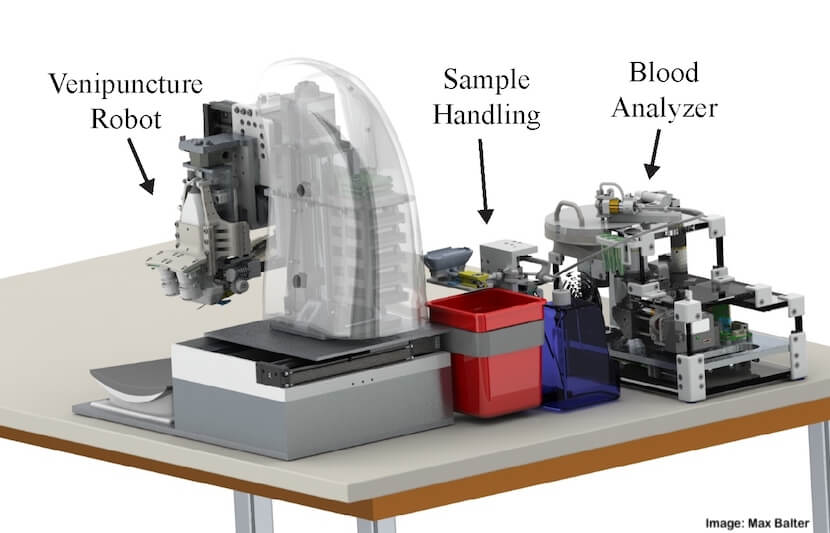Researchers at Rutgers University have developed an automated robotic device that can quickly draw blood and provide diagnostic results.
The device could improve workflow in health-related institutions, allowing practitioners more time to treat patients.
A paper describing the device is published in the journal Technology.
“This device represents the holy grail in blood testing technology,” Martin Yarmush, Paul & Mary Monroe Endowed Chair & Distinguished Professor in the Department of Biomedical Engineering at Rutgers and senior author of the study, said in a statement.
Why it’s important
“Diagnostic blood testing is the most common medical routine performed in the world and forms the cornerstone of modern medicine,” said Yarmush.
In the U.S., blood tests are conducted 2 billion times a year and influence 80 percent of the medical decisions made in primary care and hospital settings, explained Yarmush.
“However, blood draw success rates depend heavily on practitioner skill and patient physiology, and diagnostic results are generated almost exclusively in centralized labs from large-volume blood samples using labor-intensive analytical techniques,” said Yarmush.
The miniaturized robot is extremely accurate, quick and convenient.
How it works
The device comes equipped with three parts: a robotic venipuncture device, a sample-handling module, and a centrifuge-based blood analyzer.
The venipuncture robot uses near-infrared and ultrasound imaging to confine blood vessels. It then uses an image analysis procedure to reconstruct the vessels in 3D, and finally is able to place a needle on the center of the target vein.
“Following the robotically-guided venipuncture, the blood sample is then extracted and transferred to the analysis unit, which provides blood measurements on sample volumes of 25 μl using micro-centrifugation and optical detection,” said Yarmush.
Currently, the device provides highly accurate results from tests on white blood-cell differential and hemoglobin measurements.
In the future, the device could be used to conduct quick tests at bedsides, emergency rooms, in ambulances, and at clinics and doctors’ offices.
Motivation behind the invention
There has been a need for quick and automated blood-testing devices, for a long time.
“In 1982, when I was in medical school doing my pediatrics rotation, I observed several nurses late at night trying to insert an IV into a child of 3,” said Yarmush.
“It was a traumatic experience for the child, the mom, and the nurses, with no successful result until the pediatric surgeons on call did a ‘cut-down’ to identify the vein, and successfully inserted the needle. At that time I thought to myself, there has to be a better way. The idea lay dormant in my mind until about 2008, when I started this project.”
What’s next?
Yarmush has dedicated much of his professional career to finding the most effective way to extract blood and provide diagnostic results.
His work isn’t over.
“We currently have a $2.7 million National Institutes of Health grant to in-part test the system on healthy human volunteers,” said Yarmush.
To develop the robotic device further, the researchers even started a company called Vasculogic.
The company is currently seeking a $10 million investment to help develop a suitable device that can pass FDA clinical trials.
“We are also developing portable and semi-portable versions, as well as a rodent-based automated device,” said Yarmush.



